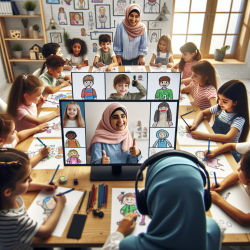Children and youths with complex communication needs often face significant challenges in expressing themselves due to severe physical disabilities. Traditional communication methods may not suffice, leading to restricted participation in social activities. However, recent advancements in assistive technology, particularly eye-gaze technology (EGAT), offer promising solutions to enhance communicative interactions.
The Impact of Eye-Gaze Technology
A study published in the International Journal of Environmental Research and Public Health explored the effects of EGAT on communicative interactions between children with complex needs and their communication partners. The research involved video-coding dyadic interactions to compare scenarios where EGAT was used versus traditional methods.
The findings were encouraging: children using EGAT initiated conversations more frequently and provided more information during interactions. This shift allowed communication partners to take fewer turns and make fewer requests, creating a more balanced dialogue. This suggests that EGAT can empower children by enhancing their ability to initiate and sustain conversations.
Practical Implementation for Practitioners
For practitioners working with children with complex needs, integrating EGAT into educational settings can be transformative. Here are some practical steps to consider:
- Assessment of Needs: Evaluate each child's specific communication challenges and determine if EGAT is suitable for them.
- Training: Provide comprehensive training for both children and their communication partners to effectively use EGAT.
- Customization: Tailor the technology to fit individual needs, including adjusting sensitivity settings and customizing communication interfaces.
- Consistent Practice: Encourage regular use of EGAT in various contexts to build familiarity and competence.
- Create Supportive Environments: Foster an inclusive atmosphere that encourages the use of assistive technologies.
The Need for Further Research
The study highlighted the potential of EGAT but also emphasized the need for further research. Understanding long-term impacts, optimizing training programs, and exploring additional applications of EGAT could significantly enhance its effectiveness. Practitioners are encouraged to stay informed about ongoing research and contribute insights from their experiences.










